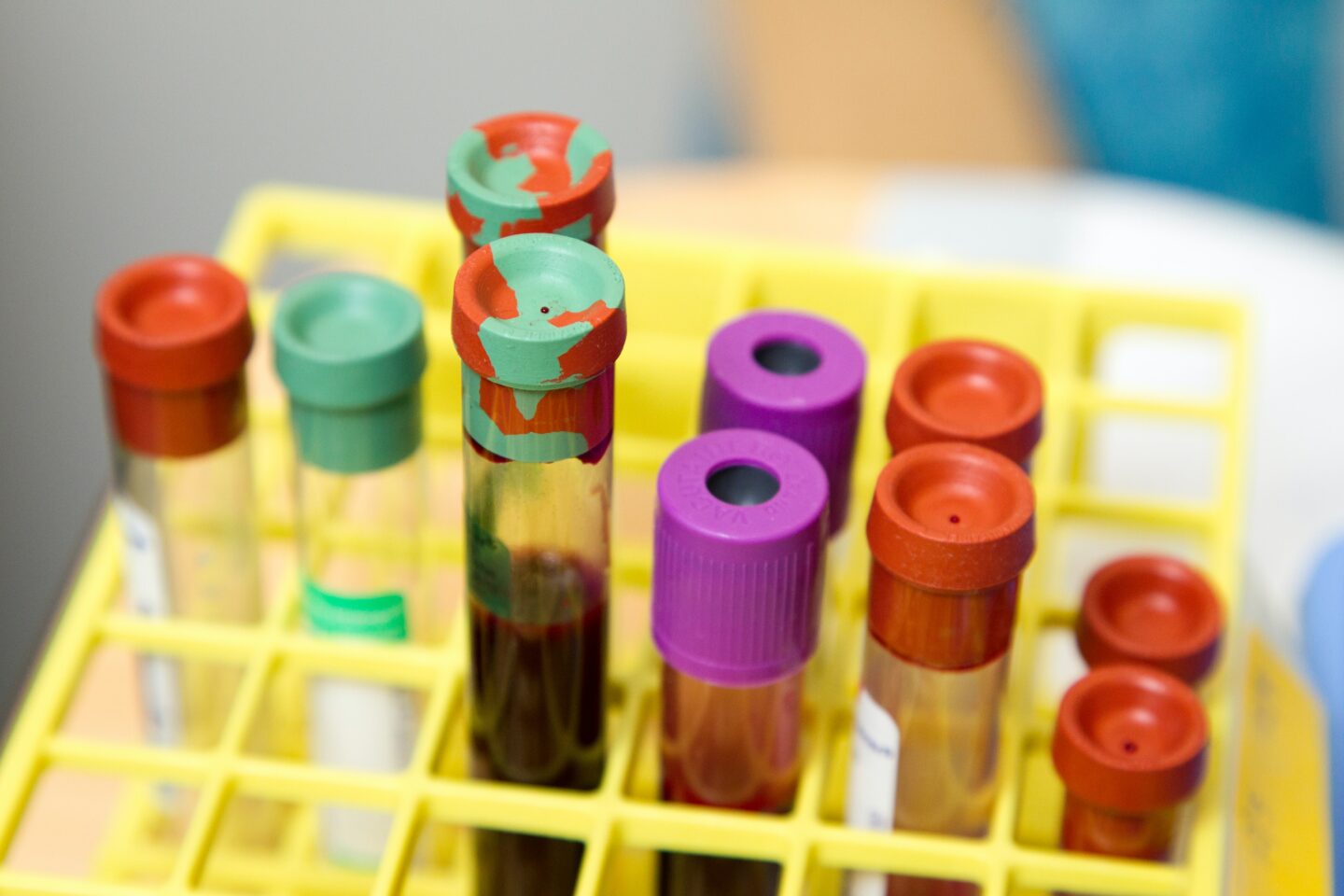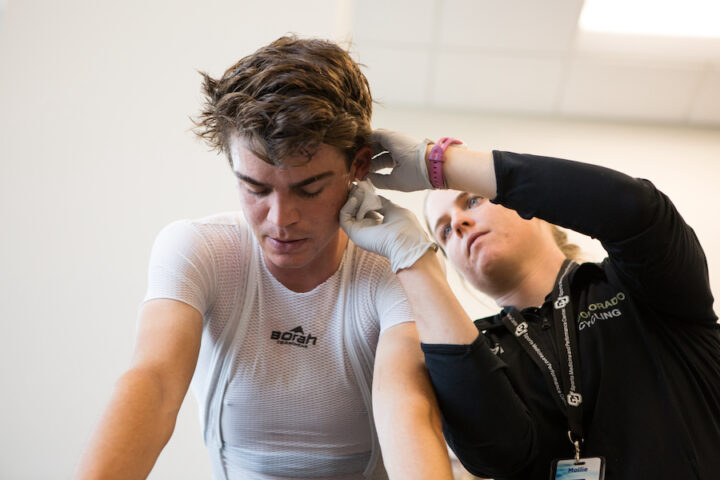When I was practicing sports medicine, it was common to have an athlete present with vague complaints of fatigue, chronic muscle aches, and, most importantly, poor performance. I would examine them, as well as their training diary, looking for obvious errors that might lead to such symptoms.
This exam would include physical, mental, and nutritional aspects. It would also include a blood test.
There are separate and specific tests that can be conducted if a specific diagnosis is suspected, such as mononucleosis or rheumatoid arthritis. However, when the search is less specific, your doctor or provider might order a more complete blood profile.
Much can be gleaned from blood testing, if you know where to look. One stand-alone test is a “snap shot in time” of your blood’s contents. An elite athlete will likely have many blood draws over the course of their careers.
With this longitudinal look at blood results, trends and norms can be seen. The normal ranges for some categories are huge. For example, the normal range for testosterone in an adult male is 240-950 nanomoles per liter of blood.
An athlete who has an historical record of his or her blood values can identify an individualized normal range; any significant changes from that normal range can be meaningful.
To simply be told your testosterone is normal is inadequate. If you are a serious recreational athlete, I recommend annual complete blood profiles. I would let your personal health care provider decide what he or she wants to look at over time.
If you are an elite athlete, I recommend semi-annual blood work until you start to see your normal levels. Once those are well established, you can return to an annual schedule. Then you will be prepared to look for a cause to treat if the need arises.
What can your blood profile tell you?
The following is a list of common blood factors you will find on a typical blood profile and a simple explanation of each. This is in no way a substitute for a consultation with your local sports medicine provider. Many of these factors require the athlete to be in a 12-hour fasted state at the time of blood draw.
Complete Blood Count (CBC) and iron profile
These give an indication of the blood’s oxygen transport abilities.
Red blood cells (RBC)
These are measured in millions per milliliter of blood. A low number may indicate some sort or level of anemia. This is one of the factors that would benefit from having some previous results to compare to for improved accuracy of the interpretation.
Hemoglobin (HGB)
A protein molecule found inside each red blood cell to which an iron atom is attached. The iron atom is where oxygen is transported. The hemoglobin is what gives blood its red color. The iron gives it its smell. The hemoglobin content of the blood is measured in grams per deciliter.
Hematocrit (HCT)
This describes the percentage of blood that is solid cells versus liquid plasma. Dehydration can falsely raise this percentage. Training should increase red blood cell production.
Mean corpuscular volume (MCV)
Indicates the average size of the red blood cell. Younger RBCs are larger than older ones at the end of their usefulness.
Mean corpuscular hemoglobin (MCH)
The amount of hemoglobin by weight within each red blood cell.
Ferritin (FERR)
This indicates the level of iron that can be transferred from old RBCs and put back into service. Low levels may indicate that some iron is being lost in the system.
Iron (Fe)
A part of the hemoglobin inside each RBC where the oxygen is transported.
Total iron binding capacity (TIBC)
High volumes occur when the body is mobilizing iron stores throughout the body and may indicate a potential future stored iron deficit.
Saturation (SAT)
This indicates the blood’s iron concentration divided by the TIBC. Low values suggest inadequate iron transport capacity.
Other considerations when interpreting your blood profile
Patterns in RBC and iron factors must be followed over time to correctly identify issues such as anemia. One abnormal finding in itself is not a diagnosis but must be considered as part of a pattern over time. Most helpful are test results taken in a healthy state to compare to those taken in a time of distress.
The physical and mental stress of athletic training is well known to cause damage to muscles, connective tissue, and joints, but less understood is the damage that occurs at the cellular or membrane level. Hormonal levels are also affected by training stresses.
White blood count is a series of markers of these less obvious changes in body functions.
White blood cells or leukocytes (WBC)
White blood cells protect against foreign invaders. WBC goes up with infection, stress, viruses, and inflammation. Some vitamin deficiencies and poor diet can affect WBC. WBC is measured in cells per cubic millimeter of blood. There are several types of WBCs (e.g. lymphocytes, biosinophils, and eosinophils). The ratio of different WBCs is known as the differential and can be helpful to your health care provider or physiologist to determine if a disease state exists.
Platelets (Plat)
Cells made in the bone marrow that contain serotonin, adrenalin, and histamines. Their purpose is to adhere to the damaged tissue, release their contents, cause clotting, and initiate the inflammatory and healing processes.
Sedimentation rate (Sed Rate)
The speed at which RBCs settle to the bottom of the collection vessel. Damaged RBCs clump together and fall at a faster rate than healthy ones.
Special tests outside the typical CBC can be performed to measure certain hormones. Because individual levels of each hormone vary greatly, having some healthy-state data can be very useful. Some common hormones affected by heavy training are;
Thyroid
The thyroid gland plays a role in the body’s metabolism including growth and development. It controls many body functions such as temperature, heart rate, and how you use energy. Both low and high values can be problematic.
Cortisol
Known as the stress hormone, cortisol is produced by the adrenal gland. It mediates the stress response, and regulates metabolism and the inflammatory and immune response. It controls the “flight or fight response” that is so important to athletes. However, high cortisol levels can indicate an out of balance situation that can affect the ability to train.
Testosterone
An androgen masculine steroid hormone produced by the testes in men and ovaries in women. It is usually six times greater in men than women. Testosterone influences development, recovery, and behavior. Overtraining can suppress production.
Cortisol/testosterone ratio
It is generally thought that elevated testosterone would be beneficial for recovery and development, whereas an elevated cortisol level can indicate chronic or acute infection and or inflammation. It may also indicate overtraining. The relationship between cortisol and testosterone is a daily exercise in balance. As an athlete pushes toward a goal, it is understood that this dance may get out of balance. This is where coaching and training planning must include rest to bring things back in line.
Women’s-specific concerns
High levels of training and or weight loss/body mass index can affect female hormones such as estrogen and progesterone as well as others. These in any combination can lead to disruption of normal menstrual cycles in women. The lack of menstruation (amenorrhea) due to exercise is common amongst endurance female athletes and usually does not indicate a healthy state. A gynecologist experienced with endurance athletes should follow these athletes.
There are many more factors that can be measured in the blood such as cholesterol, minerals, fats, sugars, uric acid, and ammonia. Your sports medicine provider will examine these as needed to investigate specific areas of health concerns.
NOTE: This article is not intended to replace a visit with your provider, but to help you navigate and understand a typical blood test for some common athlete health concerns.




